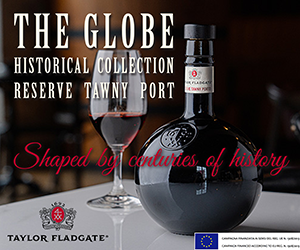Very, very occasionally, for reasons that no one quite understands, the quality of the harvest in Champagne is matched by exceptional quantity.

The 2004 vintage was such a harvest, so joining an elite group of almost magical years that include 1970, 1982, 1983 and more recently 1999.
In all other respects, 2004 was a remarkably classical year, starting with bud burst on 10 April followed by flowering towards the middle of June. The first signs of a bumper crop came with the early crop estimates, calculated on the basis of inflorescences per vine. To avoid the likelihood of an excessive yield, we thinned all the vines throughout the vineyard, reducing the clusters per vine from 25 to 15-17.
Berry set commenced soon after flowering and was unaffected by any incidence of shatter (poor or non-setting of fruit). By early July, the Pinot Noir crop was within acceptable limits but some of the Chardonnay vines needed to lose a further 8-10 clusters. This was done in early August when 20 hectares of plantings were summer-pruned.
It seems that this year's exceptional harvest was largely due to the drought in 2003, followed by low rainfall in the winter and spring of 2004. The low ground-water levels throughout the Champagne area not only promoted ripening but also helped to keep down the incidence of fungal infection, limited to a few cases of powdery mildew among some of the Chardonnay plantings. The results of a continuous drought-monitoring programme strongly suggest that the single most important factor in promoting good ripening, despite the record yield, was the year-long water shortage.
August by contrast was exceptionally wet (50 per cent above the recent 10-year average) and also unusually cool, leading to a marked increase in berry weight. By early September, average cluster weight was 30 per cent higher than the regional norm.
A return to sunny conditions at the end of the month led to a sharp increase in the rate of ripening with sugar concentrations rising by more than 1.5 degrees daily. Low rainfall and cool nights made for ideal weather conditions throughout picking which began 3-4 days before the official start date. We were delighted to see that all our hard work to reduce yields in the spring and summer had paid off.
Pinot Noir plantings in the Marne Valley were the first to be picked (20 September) followed by our Côte des Blancs Chardonnays (23 September) and last of all our Montagne de Reims Pinot Noir (27 September). Average yield for the overall area was 16,000 to 18,000 kg/ha, ranging from 13,500 kg/ha for the oldest vines in the Marne Valley to 22,000 kg/ha for the most productive Chardonnays. On arrival at the winery, the grapes showed a nicely "vintage" balance of alcohol to acidity (10.2° to 7 g/l.).
To sum up, a record crop for sure -allowing endless permutations of flavours at the forthcoming winter tastings when, this year as every year, all will be revealed. Only then will we decide whether or not to declare a vintage. All the signs so far are exceptionally promising but, given the huge yield, special attention may be needed to bring out the body and substance in this year's wines.
Champagne 2004 - Louis Roederer
Jean-Baptiste Lecaillon, Cellar Master
October 10, 2004

 quicksearch
quicksearch





